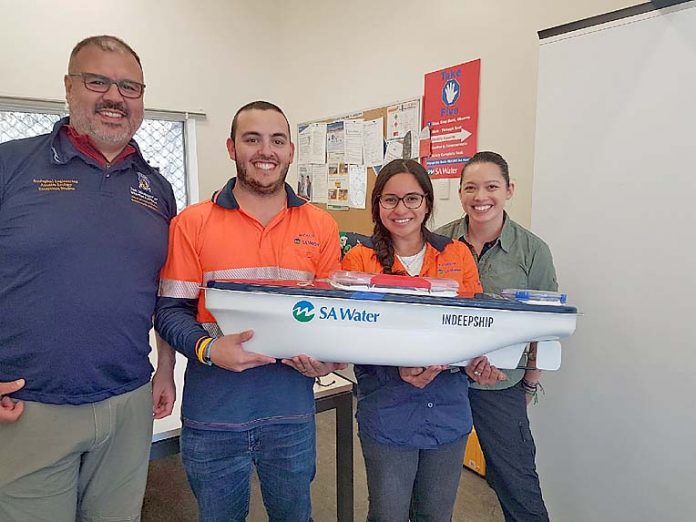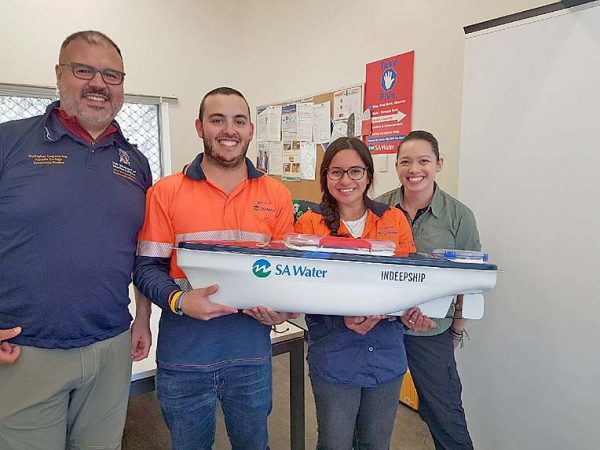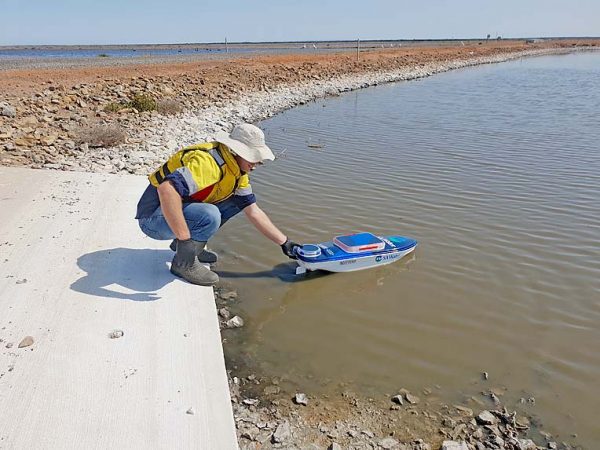

TWO innovative new remote-controlled boats will navigate the lagoons of SA Water’s Finger Point Wastewater Treatment Plant.
The devices are a new and efficient way to improve sludge management and minimise odour at the facility.
The vessels were developed by the University of Western Australia, weigh 10kg and measure one metre in length.
They use sonar navigation technology to remotely survey sludge build-up at the bottom of the Finger Point facility’s wastewater lagoons.
Fine sediment that remains suspended in the water after primary treatment stages settles at the bottom of wastewater polishing lagoons to form a sludge.
The sludge will be removed to maintain the lagoons’ holding capacity and minimise the potential for odour to develop.
SA Water production and treatment senior manager Lisa Hannant said the new technology was making a vital maintenance task more efficient and enjoyable.
“The boats are controlled in a similar way to other battery-powered model vehicles,” she said.
“They have a sonar unit scanning the bottom of the lagoon and recording data to an SD memory card.

“It is then overlaid with a Google Earth map to visually display the sludge depths. ”
There was humorous moments when developing the boat initiative.
“We had a bit of fun naming the craft and came up with ‘Indeepship’ and ‘Plop-eye’ through an internal ballot of our wastewater treatment plant operators,” Ms Hannant said.
“Maintaining public health is a serious responsibility.
“We take hold of any lighter moments that come up.”
SA Water acquired the unique vessels after a successful trial last year confirmed them as an accurate and cost effective measurement tool.
“Removing sludge is an important but often time consuming exercise,” Ms Hannant said.
“This new technology provides a highly efficient way to accurately survey and know when to de-sludge.
“Until now, our operators would launch a full-sized boat and manually take depth measurements across a grid pattern.”
The sonar abilities of the boats can accurately record the sludge profile.
“This technology allows us to identify the optimum time to de-sludge,” Ms Hannant said.
“It provides the best value for our customers, maintains optimal treatment and minimises odour risk.”
The Finger Point Wastewater Treatment Plant has the capacity to receive and treat around 6000 kilolitres of waste each day on behalf of the local community.







